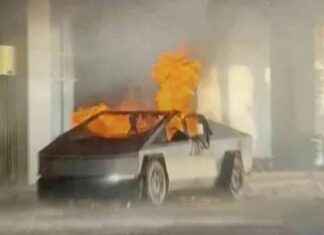It took him two years. Two years to tell the stories of six works of art looted by the Nazis. Two years of following “on the trail” – that’s the name of this fascinating podcast – the itinerary of these works from their spoliation to their restitution.
“I’ve seen gilded salons and dusty storerooms, climbed the service stairs of the Louvre, and witnessed the crating of a Klimt before transport. I doubted a lot (fortunately), I learned a lot (learned so much), I cried a lot (I don’t know how to do otherwise), “wrote Léa Veinstein, particularly moved, on her Facebook account a few days before the online publication of his audio documentary series A la trace.
It must be said that these stories are historic and moving. That they give to understand what was at work and in a systematic way under the Nazi regime, and what it will have needed then of time and perseverance so that these plundered goods, in Paris, Bordeaux, Vienna, Munich, are beginning to find their way back to their owners or, rather, their heirs.
Because the story of their restitution, if it is happy, also carries with it that of the exiles, deportations and assassinations of their owners. The work of art becomes an object of history, a witness. And when these hitherto silent witnesses begin to “talk”, it is the voices of the disappeared who finally make themselves heard. Who better than Léa Veinstein could do it, and with all that it requires of rigor, clarity and accuracy?
Complex narratives
From then on, when the author of The Voice of Witnesses (podcast that accompanied the exhibition of which she was curator at the Shoah Memorial in 2020) received the call from David Zivie and Elsa Vernier-Lopin (respectively head and in charge of research of the Mission for the search and restitution of cultural property looted between 1933 and 1945 within the General Secretariat of the Ministry of Culture), she did not hesitate. Studied the records. Asked researchers and historians who work on these issues. Interviewed museum curators. Think about how to shape these complex stories.
So that it is not just the story of the looted works that is told here, but the unique stories of six of the approximately 100,000 looted cultural assets – of which, let us remember, 45,000 were returned to their owners between 1945 and 1950 and 2,200 entrusted to the custody of national museums and so-called MNR (National Museums recovery, a status created in 1949). Over the course of the episodes, we learn or remember the existence of the ERR (Einsatzstab Reichsleiter Rosenberg), the Nazi organization responsible for the confiscation of Jewish collections in France, Belgium and the Netherlands. From Rose Valland, employee at the Jeu de Paume (museum which then served as a warehouse for looted works) who, by recording the references of the paintings, later made it possible to find them. From the creation, in 2019, of the Mission for the research and restitution of cultural property looted between 1933 and 1945, which had the good idea to order this audio series from Léa Veinstein.
Because, with subtlety, she becomes a teacher: it took a law to restore Roses under the trees, from Gustav Klimt to his heirs (episode 2) and an agreement between the Museum of Brive-la-Gaillarde (Corrèze) and the Drey family so that the L’Odorat tapestry from the Mortlake Royal Manufactory can stay there (episode 4). Because the one who recently produced a podcast based on an exceptional testimony by Simone Veil knows how to make the archives speak and make people hear. Because she knows so well how to articulate yesterday and today and bring these stories to life. For this, she was able to rely on the work of director Arnaud Forest and the talent of actors François Pérache, Caroline Mounier and Florence Loiret Caille.
Finally, and because she knows that retracing the itinerary of a painting or an archive is to restore the memory of those whom Nazi ideology wanted to annihilate, she had the sensitive intelligence to give widely to hear the very beautiful speech of Rafael Cardoso, great-grandson of Gertrud Simon and Hugo Simon, the day of the restitution of Nus dans un paysage, by Max Pechstein: “Our wish (…) is that this object serve to to tell the story of our ancestors and of all those whom Europe lost when it expelled the best part of its extraordinary cultural richness, in the name of the delirium of racial purity. We also want this restitution to open a healthier path for relations between cultural institutions and despoiled families. The German word for repair, Wiedergutmachung, which literally means “to make good again”, perfectly captures the spirit of what we can achieve when we dedicate ourselves together to repair the irreparable. »






